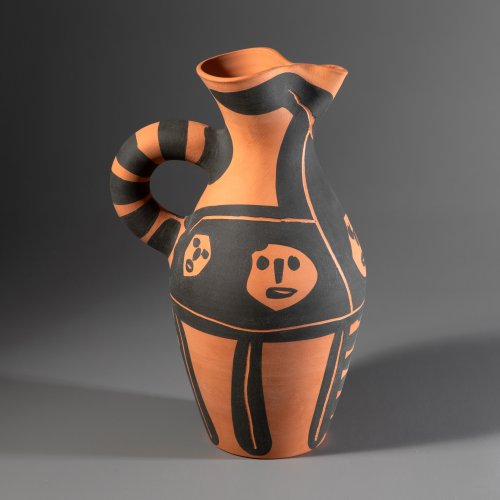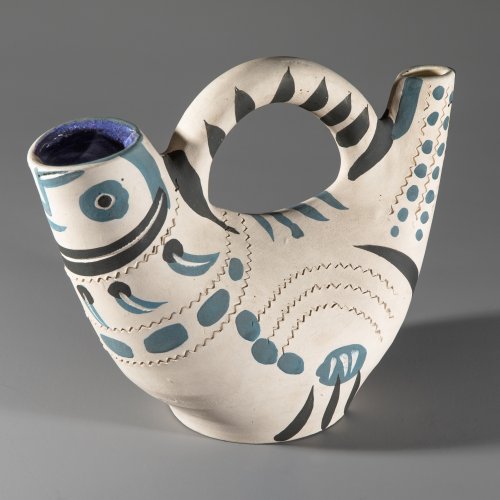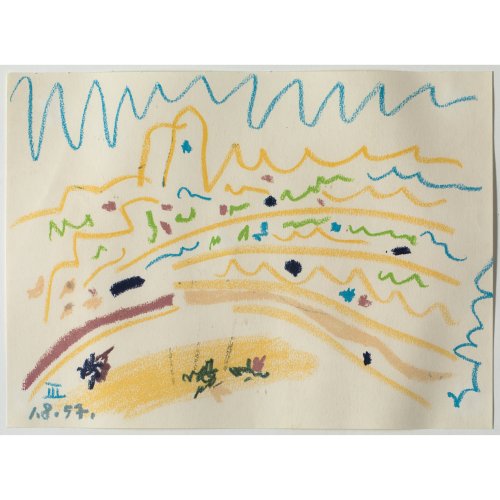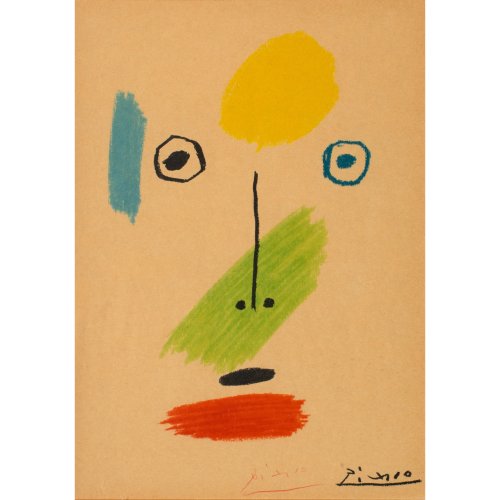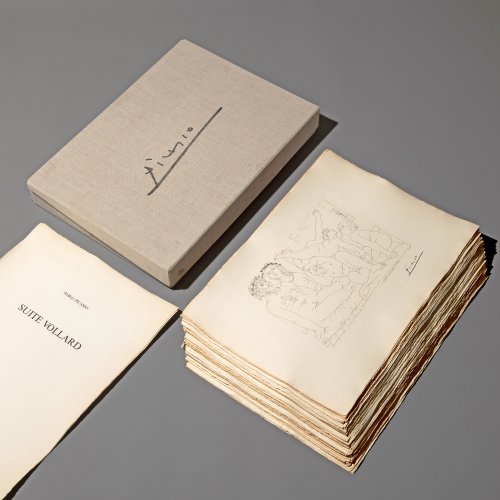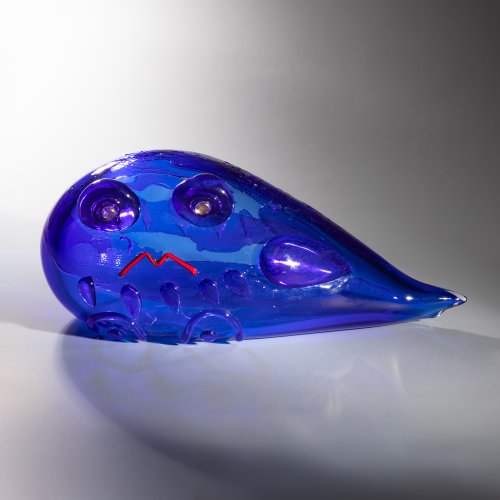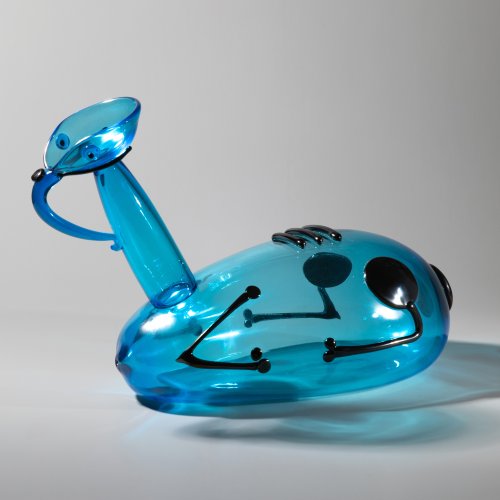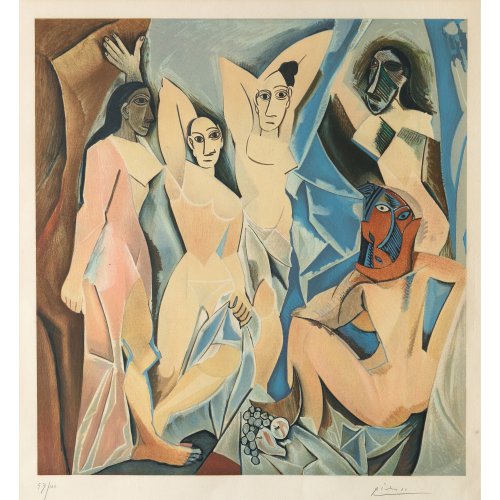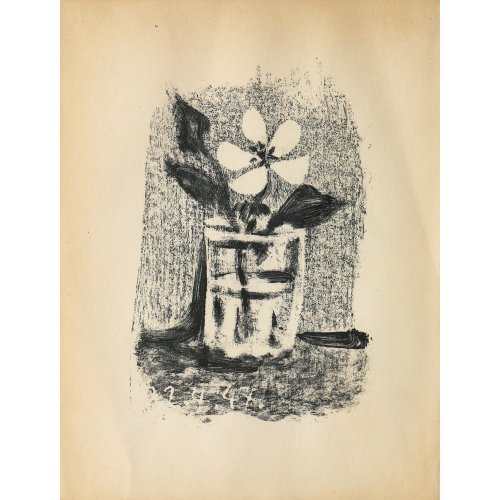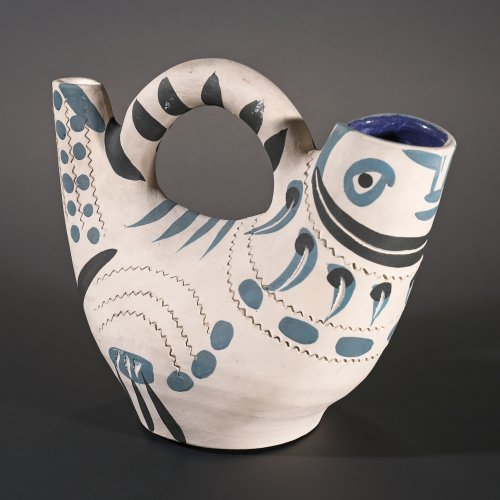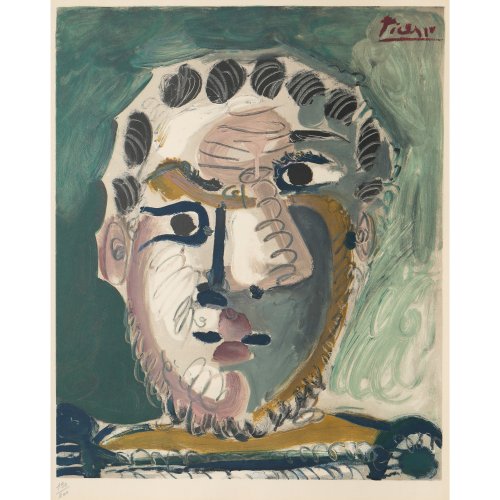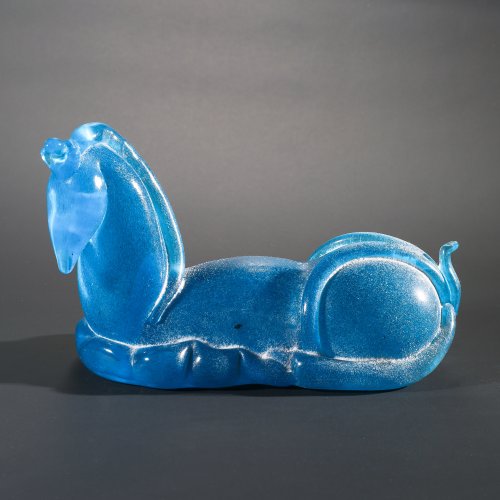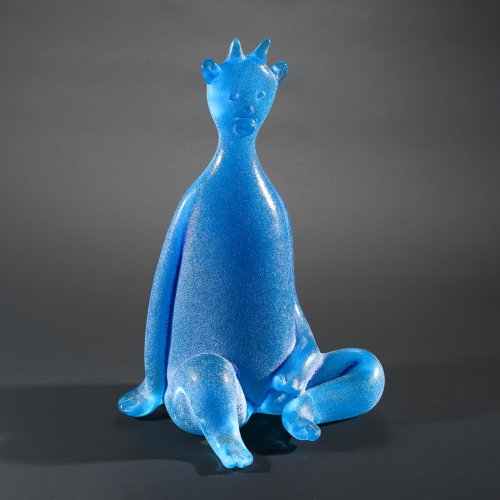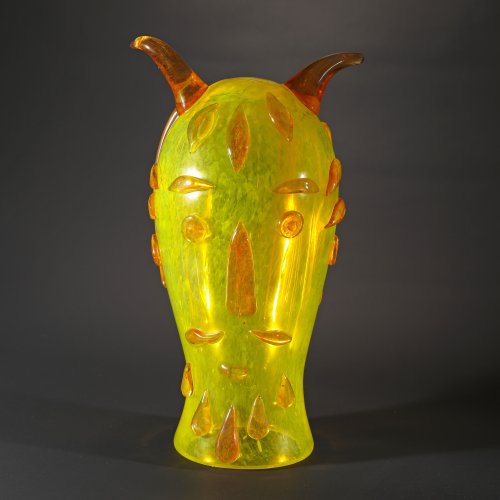Pablo Ruiz Picasso was born in 1881 in Málaga, Spain, as the son of the painter and drawing teacher José Ruiz Blasco and his wife Maria Picasso y Lopez. Four years after moving to La Coruna in 1891, the family went to Barcelona, as his father was called to teach at the La Lonja Academy of Art. Picasso's first major paintings were already created at this time: 'The First Communion' and 'Science and Charity' can be seen today in the Museu Picasso in Barcelona. Furthermore, Picasso began to deal with the theme of bullfighting.
In 1897, the young artist began studying painting at the Academy San Fernando in Madrid, the first group exhibition was held in 1900 with the group of artists 'El Quatre Gats' (the four cats), which included Jaime Sabartès and Carles Casagemas, who won Picasso as a member in 1899.
In 1900 he was able to publish some illustrations through newspapers in Barcelona and traveled to Paris with Casagemas on the occasion of the World's Fair. There he lived in an artist's studio in Montmartre and came into contact with the art of Henri de Toulouse-Lautrec, whom he admired and by whom he was particularly influenced in his choice of motifs. Toulouse-Lautrec not only dealt with the dazzling make-believe world of Parisian nightlife, but also treated subjects that depicted the outsiders of society such as circus performers, prostitutes, and bohemian misfits. The two artists shared a similar career and an orientation towards common models such as Ingres, Degas or El Greco, but they were especially similar in a veritable drawing frenzy that filled countless sketchbooks and was constantly executed with the intention of re-creation, reflection and as preparatory drawings for paintings.
After hearing of Casagema's suicide in February 1901, Picasso embarked on his second trip to Paris from Barcelona. He stayed in the late friend's studio and remained in the French capital for almost a year; it was here that he was given his first major exhibition at the Galerie Vollard in Paris. From 1901, Picasso used his mother's name as his artist's name, as he found the double S more euphonious. His second solo exhibition was shown in 1902 at the gallerist Berthe Weill in Paris with paintings from the so-called 'Blue Period'. During this period Picasso portrayed failed, broken people and depicted them in blue hues, which reinforced the melancholy impression of his works. The following work phase, the 'Pink Period', is characterized by a cheerful color scheme in pink tones. In terms of motifs, Picasso concentrated on mothers with children, jugglers and harlequins, which were first exhibited in Paris in 1905 and were largely sold to the art dealer Vollard. Picasso moved permanently to Paris, fell in love with Fernande Olivier, who also became his model, and through the Stein family of collectors he met Henri Matisse a while later.
In 1907 Picasso painted one of his major works, 'Les Demoiselles d'Avignon'. The painting, which shows figures from several perspectives, arose from the artist's preoccupation with African sculpture and marks the beginning of Cubism, developed with Georges Braque. The representational is transformed into geometric forms in the works of Cubism, and the images approach abstraction. During the period of World War I, Picasso returned to the classical style and again painted realistic portraits. In 1917, at a performance of the ballet 'Parade', for which he had designed the set and costumes, the artist met his future wife Olga Khokhlova.
Although Picasso participated in an exhibition of the Surrealists, he did not identify with the representatives of that style.
In the late 1920s Picasso met Marie-Thérèse Walter, with whom he began an affair that led to their daughter Maya. His first wife Olga left him with their child Paulo.
The bullfighting theme was taken up again in the mid-1930s; by now Picasso had established himself as a sought-after and internationally renowned artist, and in 1936 he was called to become the director of the Prado in Madrid. For the 1937 Paris World's Fair, the Spanish government commissioned him to create a painting for the Spanish pavilion. Picasso created his most famous painting here, the mural 'Guernica', depicting the destruction of the historically influential city during the Spanish Civil War.
During World War II, Picasso lived largely in Paris; he joined the French Communist Party. Artistically, he was engaged in still lifes, nudes, portraits and landscape depictions on an unusually large scale. In response to the war, he created the bronze figure 'Man with a Lamb' of 1943, which alludes to the subject of the 'Good Shepherd' in Christian art. Picasso, however, inverted the meaning of the motif to a representation in which the butcher leads the lamb to the slaughter.
Picasso was involved with the French painter and graphic artist Françoise Gilot from 1943, and their relationship resulted in their children Claude and Paloma Picasso.
From the mid-1940s, the artist turned to lithography. For the World Peace Congress in 1949, he created the world-famous poster with peace dove.
Ceramics are also an important part of his oeuvre. Picasso visited a ceramics exhibition in the town of Vallauris and there he met the owner couple Ramié of the Madoura manufactory located there. In 1947, he moved to a house near the workshop and began his extensive work of unique pieces and editions depicting creatures from mythology, mythical creatures and animals. In 1961 he married his second wife Jacqueline Roque.
Picasso's late work deals with well-known images from art history and great masters such as Delacroix, Velásquez and Manet. He was inspired by Delacroix's 'Women of Algiers' for a series of paintings and drawings, this was also a tribute to fellow artist Henri Matisse who died in 1954. The 'O' version sold at auction in New York in 2015 for a sum of around $179 million, breaking the record at the time as the most expensive painting ever sold at auction.
In the late 1950s Picasso moved from Cannes to the chateau of Vauvenargues, and a few years later he chose a villa near the village of Mougins as his final residence. Picasso died of a heart attack on April 8, 1973, at the age of 91. His grave is located in the garden of his castle Vauvenargues near Aix-en-Provence.
Would you like to sell objects by Picasso at auction? Feel free to contact our expert Laura Hille at l.hille@quittenbaum.de.
